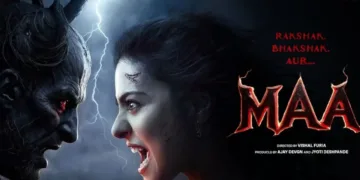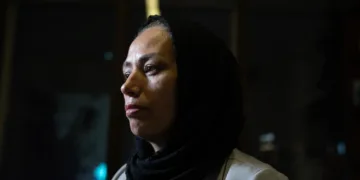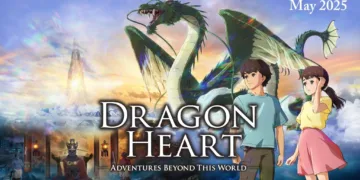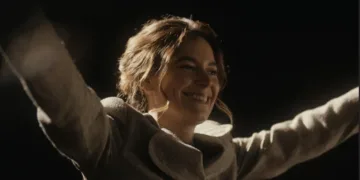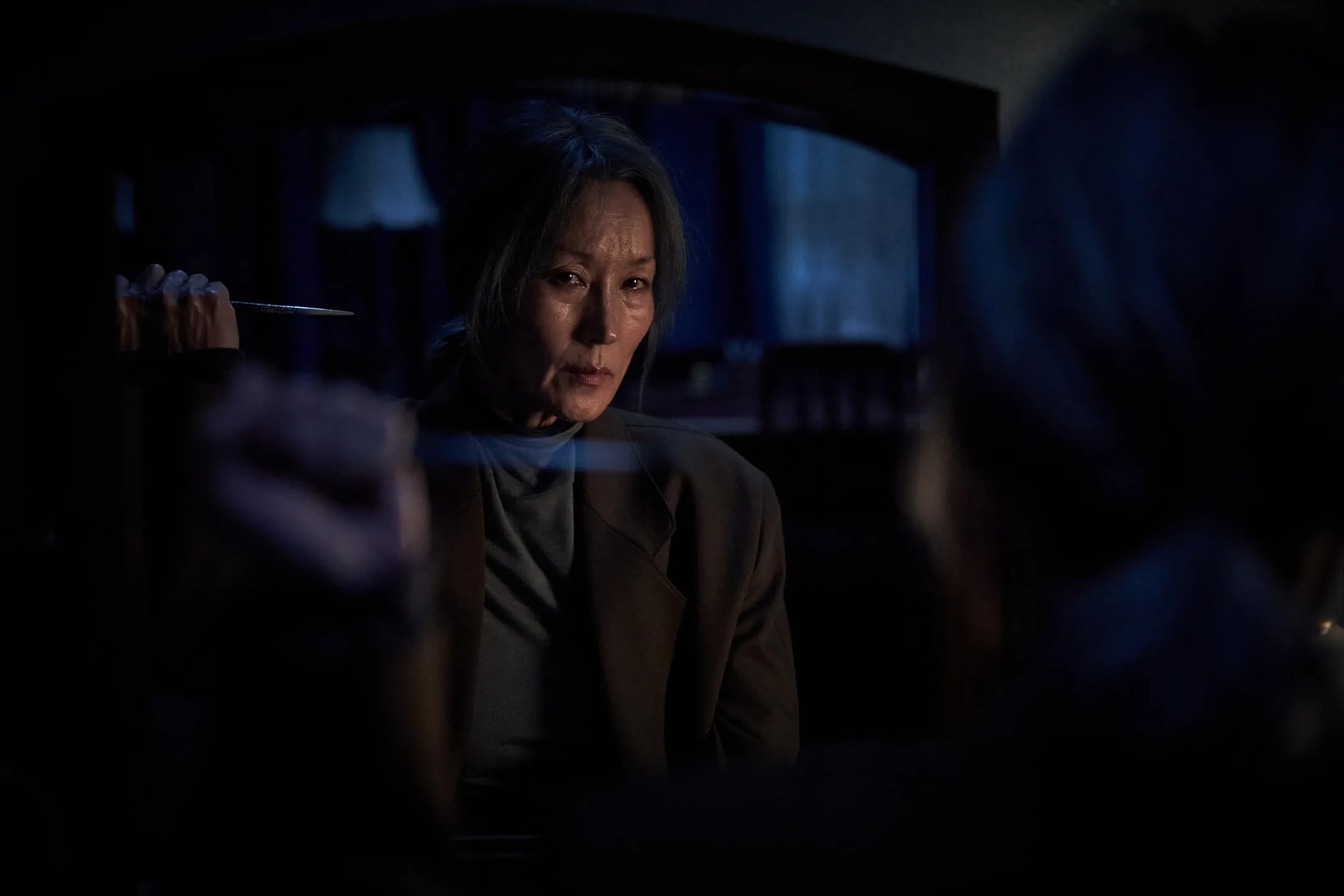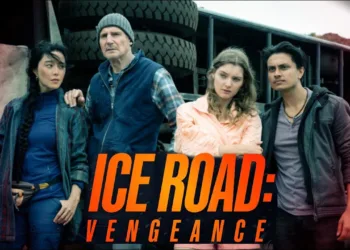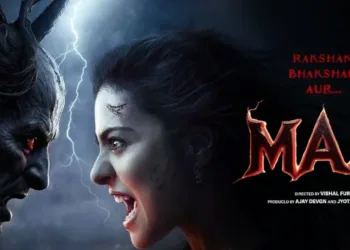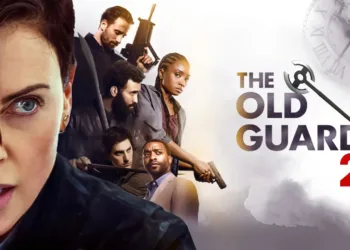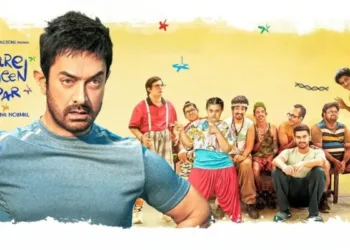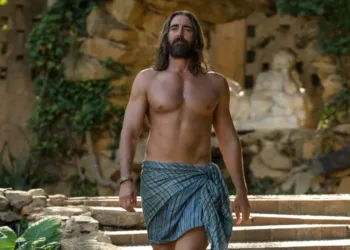The Old Woman With The Knife (original title Pa-gwa) unfolds as a striking South Korean action-drama from director Min Kyu-dong, adapted from Gu Byeong-mo’s novel. At its center is Hornclaw, a 65-year-old veteran “pest control” operative whose lethal precision once made her a whisper in the shadows—now challenged by the passage of time and a hidden health scare.
Echoing the moral complexity of parallel cinema, Hornclaw’s solitary code is disrupted by Bullfight, a brash young recruit whose street-smart tactics recall the apprentice-mentor duos of classic Bollywood thrillers, and by the unintentional warmth of a widowed veterinarian and his daughter.
The film’s dual timeline weaves her gritty origin—in 1975’s snowy alleyways where survival and justice first fused—into a present marked by subway hits, corporate hits, and derelict amusement-park showdowns. Lengthy flashbacks mirror the melodramatic reversals of Indian cinema, layering Hornclaw’s loneliness and resolve against kinetic fight sequences that alternate between balletic grace and jagged ferocity.
Visually, the palette shifts from cold urban grays to the warm hues of domestic respite, while editing choices—rapid cuts in combat scenes and lingering close-ups in moments of vulnerability—underscore the film’s meditation on aging, loyalty, and the personal cost of carrying a blade.
Stitched Timelines: Hornclaw’s Origin and Evolution
Director Min Kyu-dong constructs The Old Woman With The Knife around a tapestry of memories and present-day stakes, inviting viewers to trace Hornclaw’s transformation from vulnerable survivor to hardened operative.
The narrative opens in 1975, as a lone teenager collapses in a blizzard. Rescued by a kindly couple who run the Cherry Bay Diner, her moment of peace shatters when an American soldier assaults her. In a swift act of self-defense, she ends his life with a skewer—an incident that cements the film’s “pest control” metaphor and lays the moral groundwork for her recruitment into an underground network of assassins.
A kinetic montage follows, charting her rigorous training and rise through the ranks. This sequence recalls the compressed backstories often found in Bollywood’s parallel stream, where character evolution is painted in bold strokes. Later, longer flashbacks reappear at pivotal moments: a close-up on Hornclaw’s weary gaze before a hit allows us to feel her doubt, while overuse of these detours occasionally slows the forward momentum, reminding us that balance between memory and action is key.
In the present, Hornclaw juggles three major assignments: an underground subway hit, a corporate chairman’s covert elimination, and the cleanup of a former colleague gone rogue. Unbeknownst to her peers, she struggles with a chronic ailment—a ticking clock that adds tension to each sequence and echoes the physical fragility explored in India’s art-house cinema.
Bullfight’s entry feels cinematic in its timing: he crashes onto the scene to save Hornclaw from overwhelming odds, only to reveal a deeper vendetta. As their backstories converge—he is the orphaned son of one of her early targets—their alliance becomes a study in shifting loyalties, reminiscent of Bollywood pairings where trust is both weapon and shield.
The climax submerges Hornclaw alive in a pit of maggots, a visceral test of endurance. Bullfight’s return to pull her free delivers more than physical rescue; it offers emotional reckoning. In that final exchange, betrayal gives way to understanding, as Hornclaw confronts the cost of her isolated path and allows herself a sliver of vulnerability.
Forged by Steel and Memory: Central Performances
Lee Hye-young anchors the film with a performance that balances grit and grace. Her stunt work—delivering precise knife strikes and agile tumbles—conveys the toll of decades in the field: joints stiffen, breath comes harder, yet her resolve never wavers. In one standout sequence, Hornclaw dispatches a target in a narrow subway car with economy of motion that feels both balletic and brutal, a reminder of how action choreography in South Korea has evolved alongside its music industry’s high production values.
Emotionally, Lee traces Hornclaw’s arc from a solitary assassin, unwilling to trust, toward moments of protectiveness—most notably in scenes with the rescued senior dog and later with the vet’s daughter. Her conviction that only those who “deserve” death should fall ties back to the vigilante ethics explored in India’s parallel stream during the 1970s, when filmmakers used lone heroes to expose social hypocrisies.
Kim Sung-cheol brings youthful swagger tempered by simmering resentment. His physicality—dashing knife play, confident footwork—echoes Bollywood’s action protégés, yet his glare betrays a long-burning vendetta against Hornclaw. Their interactions crackle with tension: in one late-night rooftop exchange, he challenges her creed, and the camera lingers on their mirrored silhouettes, underscoring their shared history. The mentor–adversary dynamic recalls classic mentor-pupil dramas in Hindi cinema, where revenge often blurs into reluctant respect.
Dr. Kang (Yeon Woo-jin) and his daughter offer the film’s warmest counterpoint. Through Kang’s gentle ministrations—sewing Hornclaw’s wounds in soft-lit interiors—viewers glimpse how human connection can heal as effectively as any knife skill. Sohn, the agency’s boss, epitomizes ruthless pragmatism: his wheelchair-bound presence and clipped instructions reflect how power can survive even physical decline.
Finally, the Cherry Bay Diner couple—shown in 1975 flashbacks—cast long shadows over Hornclaw’s life, their “pest control” metaphor rooted in the couple’s own survival against injustice. Their quiet sacrifice resonates with narratives from India’s 1980s art-house films, where marginalized figures shaped protagonists’ moral compasses.
Blades, Bullets and Backdrops: Crafting Action as Cultural Dialogue
Min Kyu-dong stages knife-versus-gun confrontations with deliberate economy. Hornclaw’s blade work evokes the precision of modern Indian thrillers like War, yet shares the social-realist intensity of 1980s parallel cinema, where violence carried social critique. Every thrust and parry is caught in tight close-ups that reveal the strain of age—muscles contracting, breath catching—while firearm exchanges use staccato editing reminiscent of global hits such as John Wick. This blend of cunning strategy and raw force makes each confrontation feel earned.
The subway-car assassination uses claustrophobic framing to ratchet tension: bodies pressed against doors as Hornclaw strikes with silent efficiency. The handheld camera work evokes Mumbai’s packed local trains in Bollywood dramas, translating urban unease across cultures.
The derelict amusement-park massacre opens into a neon-flicker playground of violence, where malformed CGI snow falls like ominous confetti. In the warehouse slaughter, a flashback to Hornclaw’s early career contrasts her emerging confidence with Bullfight’s brash rescue, underscoring their entwined fates.
Early action sequences cut rapidly between blade and bullet, injecting energy but occasionally sacrificing geography. When the film allows a deliberate slow-motion shot to linger on Hornclaw’s agile footwork or grip tightening around a handle, the choreography’s artistry comes into focus. This tension between swift intensity and measured rhythm echoes the dynamic beats of Bollywood fight numbers, where pauses heighten impact.
Urban alleys, empty lots, and dingy motel rooms become extensions of Hornclaw’s psyche—harsh, isolating, unforgiving. Ordinary objects transform into lethal tools: a kimchi jar secretly housing a firearm, a simple skewer wielded like a scalpel. This resourceful weaponization of domestic artifacts recalls regional Indian storytellers who infuse familiar settings with sudden peril, turning commonplace spaces into arenas of survival.
Markings of Memory: Symbols of Age and Justice
Hornclaw’s creased tattoos—tiny glyphs of past kills—serve as a living ledger, much like the henna patterns in some Bollywood art films that trace a character’s history on skin. Her leather trench and bucket hat become ritualistic armor, shielding her from a society that too often sidelines the elderly. This visual code echoes roles in Indian parallel cinema where veteran actors carry the weight of experience in every wardrobe choice, reminding viewers that a hero’s power may lie as much in wisdom as in muscle.
The agency’s “pest control” euphemism reframes murder as public service, shifting from rodents to human “vermin.” Hornclaw’s pledge to target only the guilty mirrors the moral quandaries of 1970s Hindi vigilante dramas, where lone crusaders challenged corrupt systems. In one subway scene, her momentary hesitation before striking underscores her internal tribunal: each blade’s arc punctuates the film’s debate on who truly deserves to live.
Her bond with Braveheart, the scruffy rescue dog, provides quiet resonance—an echo of stray-animal subplots in South Indian cinema that highlight societal neglect. Later, the gentle ministrations of Dr. Kang and his daughter offer Hornclaw a fragile refuge. Their sunlit home interiors contrast with her shadowed alleyways, illustrating how fleeting warmth can become both solace and strategic vulnerability in a killer’s world.
Flashbacks surface like half-remembered dreams: the Cherry Bay Diner’s warm glow, Ryu’s counsel, the sting of first loss. These recollections anchor Hornclaw’s present hunt for redemption. Bullfight’s confrontations force her to reckon with each suppressed trauma—each image a testament to how past transgressions shape the contours of her conscience.
Crafting Atmosphere: Lens, Edits, and Resonance
Min Kyu-dong employs a restrained palette—urban scenes drenched in slate and ash contrast sharply with the sunlit warmth of Hornclaw’s formative flashbacks. These vivid memories recall the chiaroscuro of 1970s parallel Hindi films, where color signified social extremes.
Handheld camera work in fight sequences injects immediacy, placing the viewer in Hornclaw’s shaking hands and labored breaths, while static framings during her moments of doubt allow the frame to linger on her expressions, much like the deliberate pauses in Satyajit Ray’s character studies.
The film’s frequent chronological leaps demand close attention. When flashbacks punctuate present-day hits—such as cutting from a subway strike directly to Hornclaw’s teenage initiation—the impact can feel exhilarating, echoing the associative editing of Bollywood song montages. Yet at times these cuts overpopulate the narrative, threatening to dilute emotional tension. A more judicious rhythm, alternating concise exposition with action beats, would mirror the pacing of global thrillers that balance story and spectacle.
Blade whistles slice through ambient city hums: the hiss of metal is foregrounded as a character in its own right. Gunfire reverberates with hollow echoes through empty lots, while sudden silences punctuate Hornclaw’s hesitation before a kill. This strategic use of quiet—reminiscent of pauses in South Indian noir—draws attention to her internal struggle and heightens suspense.
A sweeping orchestral motif underpins the film’s most intense sequences, swelling in tandem with Hornclaw’s adrenaline surge. In contrast, subdued piano lines accompany her vulnerable interludes, reflecting thematic dualities also explored in Bollywood thrillers where leitmotifs signal a protagonist’s shifting resolve. These musical turns guide the audience between grit and grace, forging an aural map of Hornclaw’s journey.
Charting the Verdict
Lee Hye-young channels the gravitas of Bollywood’s veteran icons, her blade work and expressive gaze forging both awe and empathy. The film’s visual language—from the etched kill tally on Hornclaw’s skin to the deliberate color shifts between past and present—echoes the symbolic richness of parallel Hindi cinema. High-octane action is punctuated by moments of quiet reflection, showcasing an ambitious fusion of spectacle and character study.
The narrative’s reliance on expansive flashbacks can undercut momentum, recalling the pacing pitfalls of overlong masala epics. A few ill-timed CGI snow flurries and rapid-cut edits in the climax jar against the film’s otherwise assured style. A more streamlined edit, akin to the tight second acts in leading Bollywood thrillers, would amplify the emotional stakes.
Fans of global thrillers with a cultural heartbeat—where Indian vigilante tropes meet Korean precision—will find Hornclaw’s odyssey compelling. Festival curators hunting for unconventional female leads and genre subversions should take note. Audiences who favor lean narratives may be tested by the detours, yet the film’s defiant spirit and thematic depth offer rich fodder for post-screening conversations.
A bold cross-pollination of Bollywood’s moral intensity and South Korean action craftsmanship, it merits a 3.5 out of 5. Its powerhouse lead and layered symbolism outshine uneven pacing, marking a spirited advance in how cinema portrays age, agency, and the art of the kill.
Full Credits
Director: Min Kyu-dong
Writers: Min Kyu-dong, Kim Dong-wan (screenplay); Gu Byeong-mo (original novel)
Producers: Min Jin-soo
Executive Producers: Min Jin-soo
Cast: Lee Hye-young (Hornclaw), Kim Sung-cheol (Bullfight), Yeon Woo-jin (Dr. Kang), Kim Mu-yeol (Mr. Ryu), Shin Si-ah (Young Hornclaw)
Director of Photography (Cinematographer): Lee Jae-woo
Editor: Jeong Ji-eun
Composer: Kim Jun-seong
Production Company: Soo Film
Distributor: Next Entertainment World, M-Line Distribution
Runtime: 131 minutes
Language: Korean
Country: South Korea
The Review
The Old Woman With The Knife
Hornclaw’s journey captivates through Lee Hye-young’s commanding presence and striking visuals, even as sprawling flashbacks and occasional technical missteps prevent sustained momentum. Fans of character-driven action will find much to admire, though a leaner cut might have sharpened its impact.
PROS
- Lee Hye-young’s commanding, nuanced lead performance
- Inventive choreography that balances knife play and gunfights
- Deep thematic focus on aging, loyalty, and identity
- Rich visual symbolism in costume and color choices
- Emotional stakes enhanced by cross-generational relationships
CONS
- Flashback-heavy structure can stall momentum
- Occasional CGI and editing hiccups
- Uneven pacing in the midsection
- Some secondary characters feel underwritten























